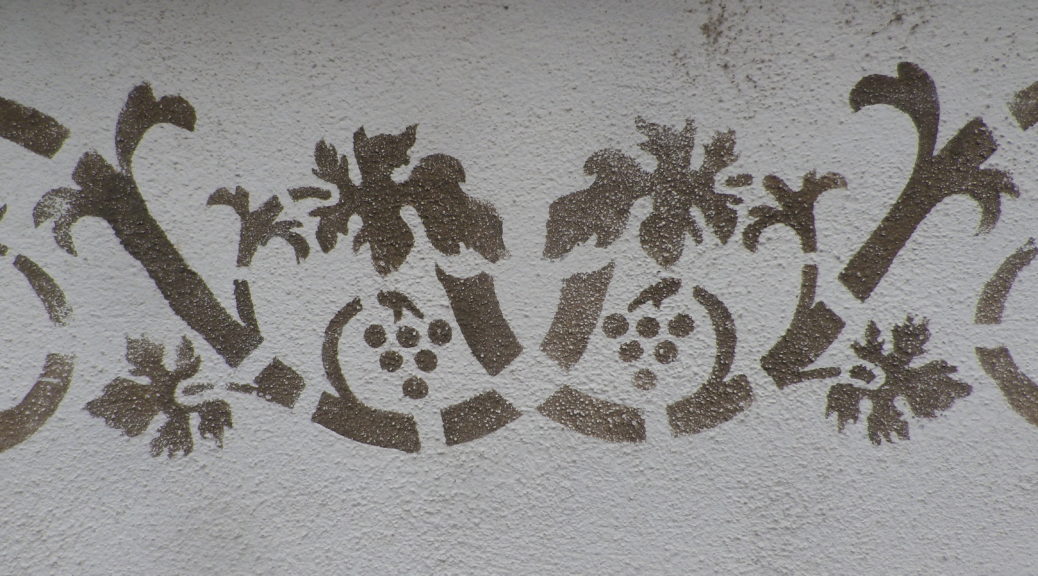What I Learned
The Rheingau, in the German state of Hesse, has one of the smallest total vineyard areas in all of Germany. But nonetheless, it has a huge importance in the world of wines. It is not only one of the most famous wine areas in Germany, it is also strung along one of the most famous stretches of river in the world!
Rheingau wine aficionados can point with pride to a long and continuous tradition of wine-making in this area: from having one of the oldest wine estates in Germany, Schloss Vollrads, to a monastery founded by the medieval St Hildegard, where the nuns still grow grapes.
This area has its own customs and traditions. In fact, the bottles from this area are known as the Rheingauer flute, and they have longer, thinner necks than other German wine bottles. Some of the terminology is different too. In this region, the words “Erste Gewaechs” on a label is synonymous with top quality wine from a vineyard.
Speaking of famous wine, the wine-making style of Riesling Spaetlese was first developed as an art in the vineyards around Schloss Johannisberg. As the famous story of the rider relates: The Prince Bishop of Fulda, who owned the vineyards, dictated the day to begin the harvest. When the messenger selected to relay that information was delayed in 1775, botrytis (or noble rot), had already developed on the grapes by the time he arrived a couple of weeks later. They were picked anyway, and the resulting wine was delicious. From that happy discovery, the tradition of “spaetlese” or late harvest, arose.
Riesling reigns supreme here, and has done for centuries. So much Riesling was exported to England from the town of Hochheim, that it became popularly known as Hock. Queen Victoria visited the town and the vineyards in 1850, presumably because she was familiar with (and fancied) the product!
The soil mixtures of quartz, slate and loess are good for Riesling, and are in abundance in and around Schloss Vollrads and other places along this stretch of the Rhine. This area also benefits from the moderating effects of the nearby Rhine on climate.
What I Tasted
2017 Riesling Wallufer Walkenberg, Kabinett, Trocken, Weingut Klerner (Walluf): A dry white wine with medium plus gold color; mineral and spice nose, with floral and spice flavors; medium acidity.
2017 Riesling, Qualitaetswein, Trocken, Weingut Georg Mueller Stiftung (Hattenheim): A dry white wine with medium plus gold color; a slight spicy, turpentine nose, with spice and mild stone fruit flavors, medium plus acidity, with a smooth, citrus finish.
2015 Riesling, Kabinett, Feinherb, Weingut Urban Kaufmann (Hattenheim): An off-dry white wine with dark minus gold color; a turpentine nose, with turpentine, sweet citrus and peach flavors, and medium acidity. TDA.
2015 Riesling Tell Rheingau, Trocken, Weingut Urban Kaufmann: A dry white wine with medium plus gold color; a green apple and white flower nose, with green apple, spice, and slight turpentine flavors; high minus acidity, with a very crisp finish.
2014 Riesling, Volratz; Trocken, Qualitaetwein, Schloss Vollrads: A dry white wine with light gold color; nose of peaches and young peach and green apple flavors; medium acidity
2013 Riesling, Alter Inselsatz, QBA, Trocken, Schloss Reinhartshausen (Eltville): A dry white wine cuvee (Riesling, Auxerrois, and Silvaner) with medium gold color; with citrus and floral notes, and just a hint of vanilla; medium acidity.
2013 Riesling, Qba, trocken, Weingut G.H. von Mumm (Johannisberg): A dry white wine, with light medium gold color; light floral notes, citrus notes, and slight minerality (clay or chalk), low acidity, smooth overall.
2012 Spaetburgunder, Wallufer Walkenberg Pinot Noir, QbA, Trocken, Weingut Klerner (Walluf): A dry red wine with medium ruby red color; smoke and light mineral nose, with smoke and red berry flavors; rather smooth, with medium tannins.
2012 Riesling, Feinherb (semi-dry), Qualitaetswein, Kloster Eberbach: A semi-dry white wine, pale gold color; sweet floral and spice notes on the nose, floral flavors, with a hint of minerality; mild plus acidity overall, a nuanced and very well-balanced Riesling.
Sekt, Pinot Rose, Brut, Wein und Sektgut Barth (Hattenheim): A dry sparkling rose wine with fine and persistent perlage, and dark minus salmon color; mineral nose, with vanilla and cherry flavors; a smooth and balanced finish.
